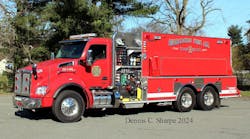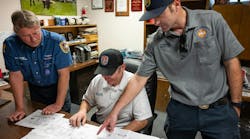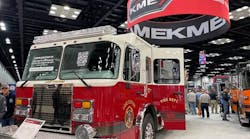Many efforts have fallen short of the mark, for a variety of reasons – perhaps because of politics, personal agendas, group dynamics, in-fighting or not being bold enough for fear of hurting the feelings of some person or group. I believe that this time it will be different, that this finally may be the group that will make things happen and stem the tide of firefighter fatalities.
Why am I so upbeat? Because the National Fallen Firefighters Foundation, under the direction of Executive Director Chief Ron Siarnicki, was able to attract over 200 fire service leaders from every area and from every discipline of what we do and what we are about. The 200-plus people (double the number originally expected) who showed up paid out of their own pockets to be in Tampa and donated their time in an effort to prevent firefighter fatalities.
Literally every corner of the fire service was represented: manufacturers, unions, career firefighters, volunteer firefighters, military firefighters, wildland firefighters, government agencies, special interest groups, fire service organizations, instructors, professors, media, authors, magazines, scholars, firefighters and officers who are tired of going to firefighter funerals. This is the first time in my career, which spans three decades, that everyone in the fire service was represented and spoke with one unified voice. (Does this sound familiar? The police departments in this country have done this for years and own the “keys to the candy store,” so to speak.) That voice said, enough is enough, we need to do whatever it takes, we need to say whatever needs to be said to prevent firefighter fatalities, regardless of who is offended. This may not sound like much, but for anyone who has been around the fire service awhile, this is truly a historical moment.
A statistical analysis of firefighter fatalities was undertaken by J. Gordon Routley to better define where foundation resources should be directed. His presentation helped provide direction for the attendees. An evaluation of firefighter fatalities from 1977 to 2003 found a steady downward trend until 1999, when fatalities flat-lined. Annual averages were taken for the years 2000 to 2003 and found that emergency duty accounted for 63 firefighter fatalities caused by heart attacks, fire suppression or vehicle accidents; wildland firefighting accounted for 19 firefighter deaths caused by fire suppression, aircraft crashes or vehicle accidents; and non-emergency duties claimed the lives of 22 firefighters caused by training accidents, heart attacks or vehicle accidents. Interestingly, the common thread in all three categories was vehicle accidents. In annual averages for firefighter fatalities for the years 2000-2003, heart attacks caused 47 firefighter fatalities, vehicle accidents accounted for 20 deaths, structural firefighting claimed 13 firefighters, wildland firefighting claimed 11 firefighters and 13 firefighters died from other causes. Within vehicle accidents, there were six areas of commonality – tanker/brush units, too fast/too heavy/unstable, off-road, driver overcorrection, rollover and no seatbelts – and two categories inherent to all vehicle accidents – collisions responding in fire department vehicles and members responding in privately owned vehicles (POVs).
Recommendations for preventing line-of-duty deaths focus on six areas; emergency vehicle operations was one of them. The urgent need for a cultural change, whereby firefighter fatalities and injuries are never accepted as inevitability, was a common theme in all of the areas. The recommendations also stress that accountability and responsibility for health and safety must be fostered at both personal and organizational levels. Simply put, you are responsible for your safety.
Regarding emergency vehicle operations, it was felt by summit attendees that for the most part there are enough rules and standards, but that someone must be empowered to enforce them. National fire truck driving licenses was one of several initiatives discussed. Driver training performed by someone or some group outside of the fire department was suggested. Re-certification of emergency vehicle operators on a regular basis was also discussed. Ironically the easiest, cheapest, simplest initiative having all firefighters wear seatbelts would have an instant, dramatic impact on reducing firefighter fatalities.
I was proud to take part in the first Firefighter Life Safety Summit, but now comes the hard part; that is, to take the 15 initiatives that were put forth and make them policy, enforce them and have the fire service continue to speak with one voice. I thank Chief Siarnicki for all of his hard work, knowing that the hardest work lies ahead.
Michael Wilbur will present “Emergency Vehicle Operations: A Pictorial Review of Current Events” at Firehouse Expo 2004 in Baltimore, July 13-18.
Michael Wilbur, a Firehouse® contributing editor, is a lieutenant in the New York City Fire Department, assigned to Ladder Company 27 in the Bronx, and has served for the past five years on the FDNY Apparatus Purchasing Committee. He has consulted on apparatus-related issues throughout the country. For further information access his website at www.emergencyvehicleresponse.com.




